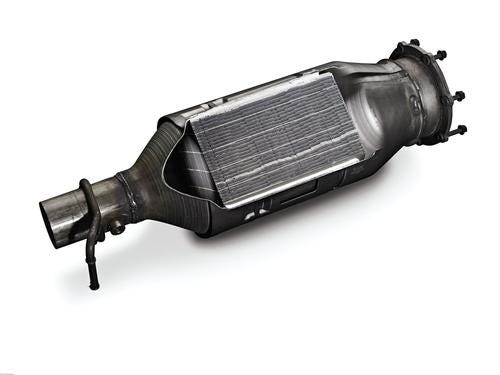New Technologies Reduce Diesel Emissions to Near-Zero
April 6, 2015

This is part 3 of a three-part series on clean diesel click for Part 1 or Part 2.
As I wrote in my last post, automakers are rolling out greater numbers of sleek light-duty vehicles that run on new clean diesel, or ultra-low sulfur diesel fuel, and have high-efficiency engine technologies that extract more BTUs than ever from a gallon of fuel. But the new breed of light-duty diesel vehicles also relies on advanced emissions technologies designed to work with ULSD fuel. Older vehicles can be retrofitted with newer technologies to improve emissions performance as well.

The key technology system used by most automakers in clean-diesel emissions control is selective catalytic reduction. SCR reduces nitrogen oxides (NOx) to nitrogen, water, and a small amount of carbon dioxide (CO2) by injecting a reductant into the exhaust stream. Most SCR systems use ammonia-based diesel exhaust fluid (DEF), an automotive-grade urea, as the reductant.
Sold at truck stops or dispensed at diesel fuel pumps, DEF is carried in a special tank on the vehicle and has to be replenished periodically -- at about the frequency of an oil change for a light-duty vehicle, according to the Diesel Technology Forum (DTF).
DTF says that SCR, by itself, can reduce NOx up to 90%, hydrocarbon (HC) and carbon monoxide (CO) emissions by 50 to 90%, and particulate matter (PM), or soot, by 30 to 50%.
Diesel autos outfitted with the new tech reduce PM further through use of diesel particulate filters (DPFs). DPFs are made in two primary varieties, open and closed, with the closed variety usually referred to as a wall-flow DPF.
The advanced wall-flow technology forces diesel exhaust through the walls of the filter. According to Huss Group, a German DPF manufacturer, the open-style filter only provides 40 to 60% efficiency. However, wall-flow DPFs reportedly can attain filtration efficiency of 99.9%, making them the preferred technology for clean-diesel emissions systems. For filter material, automotive wall-flow DPFs most commonly use cordierite, a ceramic material also found in catalytic converters.
The combination of ULSD, engine improvements such as electronic controls, and advance emissions controls has significantly changed the nature of diesel exhaust. Stringent new requirements from the Environmental Protection Agency (EPA) have given rise to what's called new technology diesel exhaust (NTDE), i.e., exhaust from vehicles designed with or retrofitted with the post-2006 technologies. A recent study from the nonprofit Health Effects Institute (HEI) found that NTDE is not carcinogenic, in contrast with traditional diesel exhaust (TDE), which has long been known to cause cancer. The study also found that concentrations of particulate matter and toxic air pollutants from NTDE are more than 90 percent lower than those from TDE.
In an announcement, Dan Greenbaum, president of HEI, commended the implementation of new diesel technologies. "We are already seeing a transition in America's roads with over 30 percent of the trucks and buses in use today meeting these new standards, and the trend is growing in Europe as well," he said. He noted the results of his organization's study "argue for even greater efforts to accelerate the replacement of older diesel engines."
Al Bredenberg is a writer, analyst, consultant, and communicator. He writes about technology, design, innovation, management, and sustainable business, and specializes in investigating and explaining complex topics. He holds a master's degree in organization and management from Antioch University New England. He has served as an editor for print and online content and currently serves as senior analyst at the Institute for Innovation in Large Organizations.
Design engineers, New England's premier design and manufacturing event, Design & Manufacturing New England, will take place in Boston, May 6-7, 2015. A Design News event, Design & Manufacturing New England is your chance to meet qualified suppliers, get hands-on with the latest technologies, be informed, and expand your network. Learn more here.
About the Author(s)
You May Also Like





